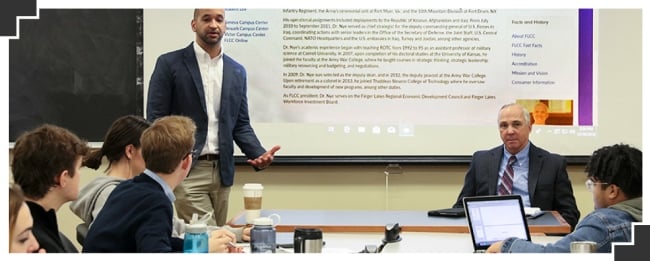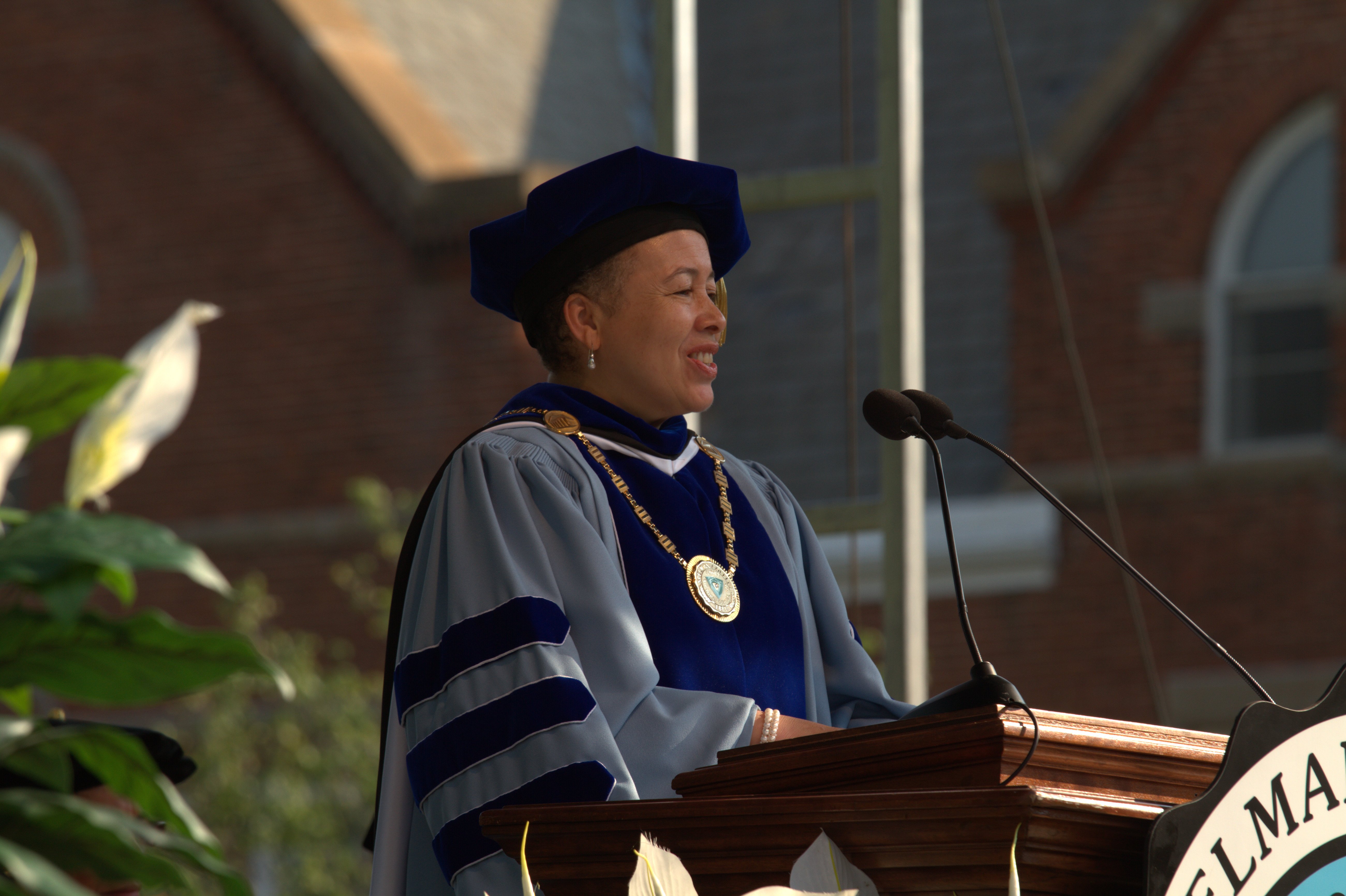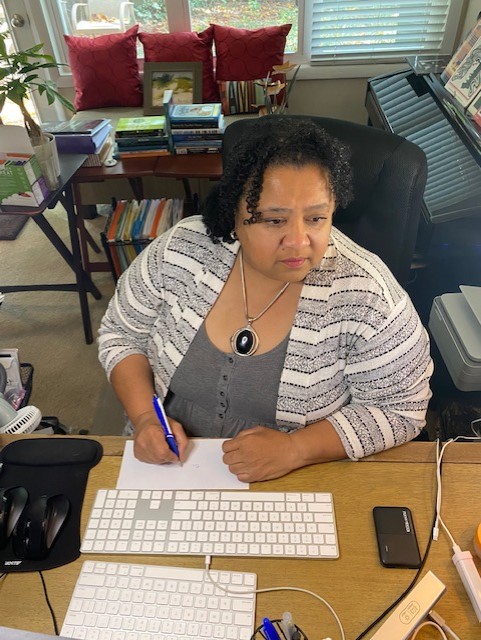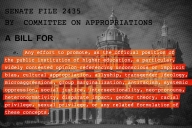You have /5 articles left.
Sign up for a free account or log in.

Justin Rose teaches a class at Hobart and William Smith Colleges.
Kevin Colton/Hobart and William Smith Colleges
Robert Kelly had what he calls “one of the experiences that we hope students have when they go to college.”
He graduated in 1994 from Loyola University in Maryland -- then called Loyola College -- and soon after earned a master’s degree in education administration from the University of Vermont and later a Ph.D. from the University of Maryland. His career in higher education administration took him to Seattle University, Loyola University in Chicago and Union College in New York. Today, he’s back at Loyola Maryland as special assistant to the president.
Throughout his career, Kelly found himself one of few Black administrators on campus.
“There are very few people ahead of you who have opened the door. I really had to reach out to people who might not necessarily look like me,” Kelly said.
Today, Kelly tries to be the mentor for others that he himself so often lacked.
“I make an effort to make sure that I'm doing it for all people who might be behind me, but in particular African American or Black people, because there are so few that have made their way through various pipelines in higher education,” he said.
Despite such individual efforts, Black students, faculty members and staff members remain disproportionately underrepresented across the higher education workforce.
Black and African American employees make up less than 10 percent of higher education professionals, according to the latest data from the College and University Professional Association for Human Resources. The annual survey includes demographic information for midlevel college employees in academic affairs, athletics, external affairs, facilities, information technology and other areas. White employees account for more than three-quarters of all higher education professionals.
Among administrators and executive leadership, this disparity is even greater. CUPA-HR’s report shows that less than 8 percent of administrators are Black or African American, and more than 80 percent are white.
Higher education professionals and faculty do not reflect the overall population of undergraduates or the shifting demographics in the United States. Fewer than a quarter of faculty members are nonwhite, and only 6 percent are Black, according to 2017 data from the National Center for Education Statistics, or NCES. The data show that 14 percent of undergraduates are Black, more than double the percentage of Black faculty members and still greater than the percentage of Black professional employees. More than 13 percent of the United States population is Black, according to U.S. Census Bureau estimates from 2019.
The enduring whiteness of higher education professionals is often chalked up to a “pipeline problem,” wherein there are not enough Black Ph.D. students, faculty members and entry-level staff members to rise through the ranks and achieve racial parity among the faculty and upper-level administrators.
Still, studies show the pipeline problem is not the sole answer to the lack of diversity in higher ed. Flooding the pipeline -- hiring people of color and admitting people of color into Ph.D. programs -- doesn’t necessarily change the demographics at the top.
In their pursuit for tenure, promotions, administrative jobs and college presidencies, many Black faculty and staff members face challenges and microaggressions largely unacknowledged by their white colleagues. Whether due to willful ignorance or outright hostility, this treatment complicates their relationships with their white employers and coworkers. If higher education is to rid itself of these unfair hurdles, experts say that colleges must work to recognize and unravel the many ways racism is baked into their institutions, traditions and practices.
To start, experts suggest a critical look at the tenure and promotion review process.
Tenure and Promotion
Justin Rose wants to be a college president someday. He once shared that goal with a Black college president he deeply admired.
“This is great,” replied the president, whom Rose didn’t name. “But don’t tell anybody else that.”
At the time, Rose was an assistant professor of political science at Hobart and William Smith Colleges in Geneva, N.Y. Today, he’s the dean of faculty recruitment, retention and diversity at Rhodes College in Memphis, Tenn.
Rose was one of only five Black assistant professors on campus at Hobart and William Smith. He knew that faculty members didn’t always view administrators favorably, and he didn’t want to spoil his relationships with his colleagues by telling them he wanted to join “the dark side,” he said.
“You’re a person of color who already feels like an outsider,” Rose said. “You don’t want to add to that by portraying the fact that you want to be an administrator.”
In addition to worrying about outsider status, Black academics are frequently working harder than others as they move forward in their careers.
While seeking tenure and promotion, Black faculty and staff members are often asked to carry greater service burdens than their white colleagues. A 2019 study found that women and faculty members of color take on a disproportionate amount of the “invisible” work in academia, such as serving on committees, mentoring and advising students, overseeing student organizations, and other community-based service. This service is subsequently devalued during tenure and promotional reviews.
 “Often Black faculty and staff are taxed more to be there for students,” Kelly said. “It’s often unrecognized as a part of our job.”
“Often Black faculty and staff are taxed more to be there for students,” Kelly said. “It’s often unrecognized as a part of our job.”
Freeman Hrabowski, president of the University of Maryland Baltimore County, is well aware of this dynamic.
“I am strongly encouraging Black faculty to focus on their research and teaching first and to get tenure,” Hrabowski said. “Too often, we expect so much of Black faculty -- as we have of women faculty -- and they give so much in service, and then when it’s time for tenure, they don’t get it.”
That’s not easy to do, though. Rose recounted dilemmas he faced in academic service.
“You feel like you always have to be overly gracious and give a lot of your time, because you don’t want to be seen as the outsider, because you feel like that will come back and haunt you at the time of review,” Rose said. “You’re asked to sit on committees, or you feel a special obligation to, because you feel like, ‘OK, well, there’s got to be diversity representation on these committees. There’s not many of us here.’ So you start to serve on committees.”
Institutional Fit
Beverly Daniel Tatum has had a storied career in higher education. As a psychologist and the former president of Spelman College, she’s well versed in the challenges Black faculty and staff members face at predominantly white institutions.
Early in her career, Tatum interviewed for two tenure-track positions, one at Mount Holyoke College -- where she was later hired -- and one at a similar institution she declined to name.
She presented at the second institution summarizing her research, which sought to answer questions about how Black families living in predominantly white communities cultivated a positive sense of racial identity in their children.
“When I gave my talk there, some of the members of the psychology department asked me why I didn’t include white families in my research sample,” Tatum said. “The answer should be obvious. I’m not studying white families.”
In the eyes of the search committee, Tatum’s research was “only important if you can tell us how it connects to what white people do,” Tatum said. White academics are sometimes less interested in research that centers on Black people and their experiences, she said.
“If you’re a Black faculty member studying issues related to Black people, one of the questions might be, ‘Is what you’re doing really important enough? Maybe you should be doing something more mainstream,’” Tatum said.
That lack of interest can lead to perceptions of poor institutional fit, according to Kelly.
“Often, we look at somebody and say, ‘Oh, I don’t like that person’s research, I don’t like the organizations they've been a part of, or their pedigree of institutional type,’” he said.
But are those statements actually about a candidate’s ability, or their identity?
“I think when we look at fit, it’s often a way to shut people out,” Kelly said.
Fit is subjective -- it’s an imprecise concept about whether or not a person would suit a particular campus. A recent study in The Journal of Higher Education shows that judging candidates based on fit often leaves room for racial biases that harm colleges’ diversity efforts.
 Sometimes, hiring managers hold Black and white candidates to entirely different standards.
Sometimes, hiring managers hold Black and white candidates to entirely different standards.
Birgit Burton, executive director of foundation relations at the Georgia Institute of Technology, founded the African American Development Officers network after holding regular networking meetings with other Black professionals in the fundraising industry. She remembers a story that an AADO network member told her about being unfairly passed up for a new job. This colleague was a Black woman. The hiring manager turned her down for the role, claiming that the organization was looking for someone with at least three years of experience at their prior job. They later hired a white man who didn’t have the required experience.
“The person they hired only had a year and a half,” Burton said.
Mentorship, Retention and Changes
All the people interviewed for this article said they enjoyed their work in higher education. Rose’s administrative ambitions were born in part from his work on faculty committees. Tatum turned away from a career in clinical work to continue teaching. But they all agree that the higher education sector has a ways to go before it can claim to be antiracist.
“I don’t know of a campus that can say it has arrived,” UMBC’s Hrabowski said. “We can learn from each other.”
Networking in higher education is difficult for many people, but the relatively few Black faces on many campuses make it especially tough for young Black faculty and staff members to find mentors.
When Tatum and her husband, who is also a professor, were first hired at Westfield State University, their arrival “doubled the Black faculty population” from two to four, she said. At Hobart and William Smith Colleges, where Rose was one of five Black assistant professors, he said three Black assistant professors left the college without receiving tenure. The college has since hired several other Black faculty members, he said.
Burton was the first fundraiser of color that Georgia Tech hired. Fundraising in general is a predominantly white industry. Only 9 percent of fundraising professionals are people of color, and only 4 percent are African American, according to the Association of Fundraising Professionals. (This paragraph has been updated to correct the title of the Association of Fundraising Professionals.)
Promoting Black faculty and staff members into leadership positions will help colleges identify and address racism in their institutions, Hrabowski said. Rose agrees, but he warns against “the racism of the typecast,” in which Black faculty members are considered for positions based on their race. He’s often told he would make a great chief diversity officer.
“We don’t get thought of for any other positions,” Rose said. “We only get thought of for diversity.”
Thinking proactively about what Black faculty and staff members need to feel comfortable in an office is essential to keeping them around, Burton said.
“When I do diversity and inclusion training and I do top-of-the-session questions, I ask, ‘How many times a day do you think about eating?’” Burton said. “They’ll say three or four times a day.”
Then she asks how often participants think about race during the day.
“I kid you not, about 60 to 75 percent will say rarely or never, and it’s the white people,” she said. “But the people of color are the ones who say, ‘I think about it often.’”
Black leaders on predominantly white campuses frequently feel reminded of their race in ways their white counterparts do not. To illustrate this, Burton shared what she called a boring anecdote -- at the end of a recent Zoom happy hour call, one person suggested that everybody send in their baby pictures. On the next call, participants would guess who is who.
“I’m the only person of color,” Burton said. “It never occurred to anybody, ‘Well, how much fun would that be for me?’”








